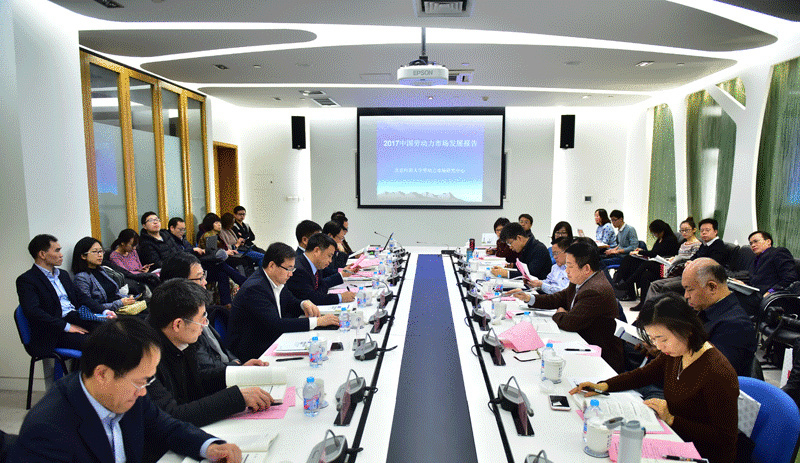Report: Manufacturing moving up value chain, boosting employment

The China Labor Market Development Report 2017 is released at the seventh “China Labor Market Development Forum.” (PHOTO: CSSN)
The growth of mid-to-high-end manufacturing is increasing the employment rate, according to a recent report issued by the Labor Market Research Center at Beijing Normal University.
The China Labor Market Development Report 2017 was released on Dec. 23, 2017 at the seventh “China Labor Market Development Forum” under the theme “The Challenges of the Labor Market: Becoming a Manufacturing Power.” This is the seventh report the center has compiled on the development of the Chinese labor market.
According to the report, the rapid development of mid-to-high-end industries has generated marked positive effects on employment.
In general, the number of workers in high-tech industries has increased year by year, up from 7.44 million in 2006 to 13.54 million in 2015, according to the report. By industry, the number of employees in the primary, secondary and tertiary sectors grew by -4.1 percent, 2.1 percent, and 3.5 percent, respectively, on average annually from 2006 to 2015. The growth of employees in high-tech industries has significantly outpaced that in other sectors.
According to the report, Chinese manufacturing’s advantage in labor cost remains. From 2005 to 2013, the unit labor cost of the Chinese manufacturing sector rose from 0.92 to 3.88 dollars per hour at an annual average growth rate of 31 percent.
Nonetheless, China’s labor cost is still at a low level compared with other countries. In 2013, the unit labor cost of China was 57 percent that of Mexico, 12.5 percent that of the United Kingdom, 13 percent that of Japan, and even much lower than in developed countries like the United States, France, Germany and Switzerland, according to the report.
The report also noted that new businesses, such as the sharing economy and gig economy, constitute a new force driving the transformation and upgrading of the employment structure while posing new challenges to existing labor relations.
Lai Desheng, director of the Labor Market Research Center, said that the quality of human capital will be a key factor for China to become a strong manufacturer.
Translating the comparative advantage in population size into an edge in population quality means constantly improving the quality of the public and the majority of laborers through education and training while committing to the cultivation of the “craftsmanship,” in order to proactively adjust to changes in the economic situation and flexibly cope with challenges from global competition, Lai said.
On this basis, the report put forward five suggestions for labor market reform to make China a strong manufacturer. It is first essential to coordinate the development of the real and virtual economy to create a more favorable environment for the healthy and sustainable development of the real economy.
Efforts should be made to create more regional manufacturing and employment centers to avoid the concentration of job opportunities in first- and second-tier cities, according to the report.
The third is to fully unleash the dividend of human capital, implement labor market policies favorable to human capital and nurture a batch of “strong craftsmen,” according to the report.
While it is vital to seize opportunities brought by the swift development of high-tech industries and equipment manufacturing, attention should be paid to how new technologies, like industrial robotics and artificial intelligence, will impact employment, according to the report.
